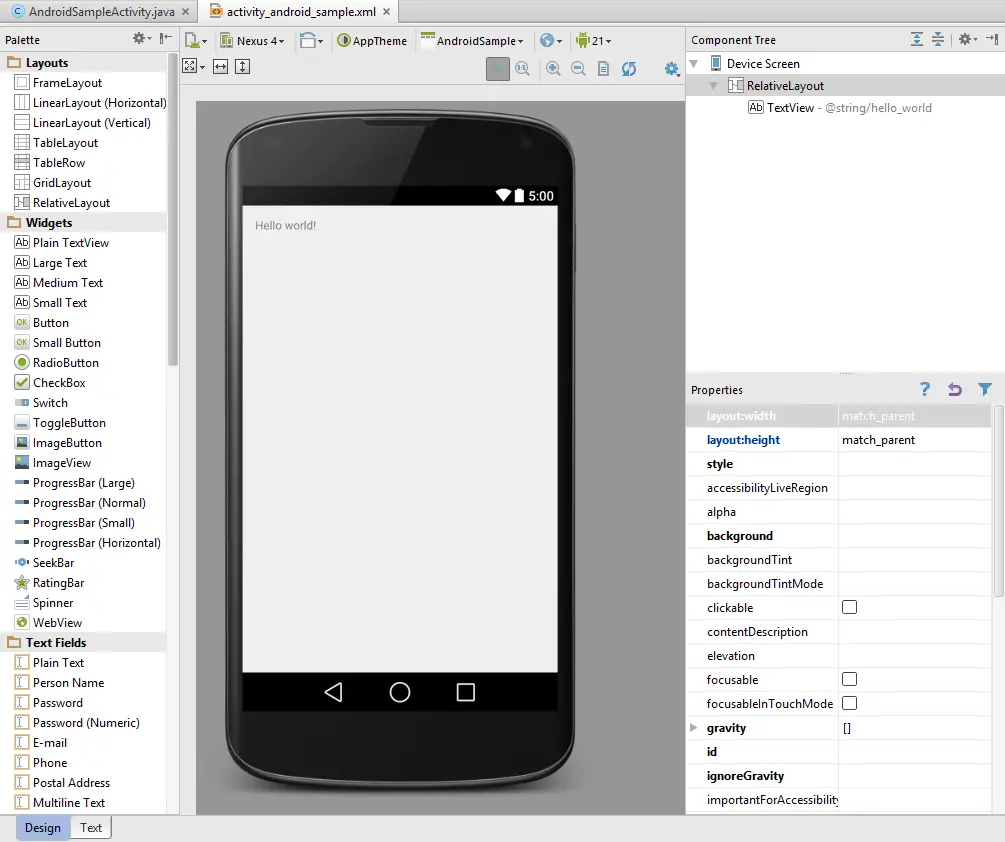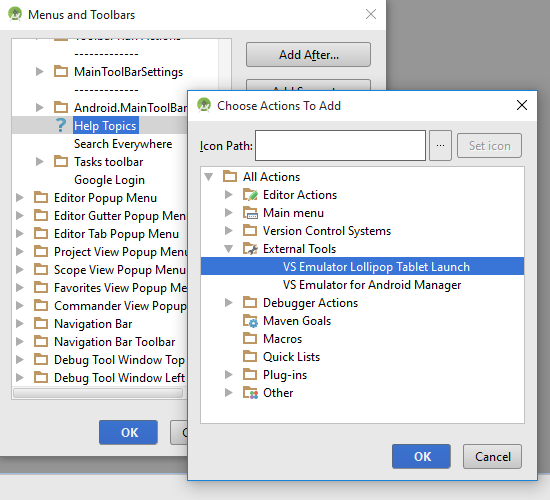

- #Add image to android studio apk
- #Add image to android studio archive
- #Add image to android studio Offline
Go on and read more about Picasso in their official documentation and other features it offers and implement them in your Android applications.ĭownload the sample APK from Google Drive. Instead of manually implementing all these features with a bunch of code, why not use Picasso, which is easy to use and offers better syntax. We have discussed scaling, resizing, targets, callbacks, and the rest. Picasso is a powerful image loading library with various features. Note: Picasso does not cache images from URLs without image extensions, i.e if the image URL does not end with. setOnClickListener ( this ) // In the onClick methodĬase R.

String url = "" // In the initializeView methodīuttonUrlImage = (Button ) findViewById (R. In our MainActivity class, initialize the image view and the buttons that are in the layout resource file. Click Finish and wait for the project to build.Īdd the following dependency to the app module-level adle file: Select Start new Android Studio Project -> Empty Activity ->. Step 1 – Create a new AndroidStudio project The reader should have basic understanding of image loading in Android applications.The reader should have a beginner level understanding of Java and XML.Bitmap - This refers to a digital image composed of a matrix and dots used to store digital photos.Multi-thread networking This refers to the ability to work on multiple tasks at the same time.Caching - The process of storing data in a temporary storage area (cache).
#Add image to android studio archive
#Add image to android studio Offline
Memory and disk caching: Caching allows for offline capabilities and less resource usage.Priority requests: This refers to an option of loading images into an ImageView depending on its priority to be displayed, such as a Hero image, can be given the first priority to load an image before other minor image views.Placeholder and error images: This refers to images displayed when there is an error or when an image is being loaded into an ImageView.Rotation and transformation of images: This refers to changing the orientation of an image from a point.Center cropping images: This is scaling a whole image by resampling it.Resizing and scaling of images: This refers to adjusting the size of an image. Choose the image that you want to display in your android main xml layout and paste it inside drawable directory.Image loading: This refers to accessing an image via a URL.Picasso offers better image quality, disk caching, and simpler syntax to carry out various library features. Picasso is a powerful image loading, downloading, and caching library developed by Square. In this article, we will discuss Picasso. Many visual representation libraries such as Glide, Picasso, Image loader, and Fresco were then developed. As much as it was an improvement in mobile development, it was still hectic.

Images were of low quality, could neither be downloaded, nor edited, and screens would “freeze” as pictures loaded. This was not perfect the first time around. With time, most mobile applications such as Instagram, Facebook, Twitter, and LinkedIn started implementing visual representation. In this current era, most of our minds seem to understand either graphics in motion or pictures rather than words. .Visual representation in mobile application development is a growing UI/UX trend.You can specify the following permissions depending on what you need: To use the minimum necessary permissions ALONG with certain additional permissions, specify those extras in permissions, e.g. To use ALL permissions supported by Expo by default, do not specify the permissions key. The minimum necessary permissions do not require a Privacy Policy when uploading to Google Play Store and are: To use ONLY the following minimum necessary permissions and none of the extras supported by Expo in a default managed app, set permissions to. List of permissions used by the standalone app.


 0 kommentar(er)
0 kommentar(er)
